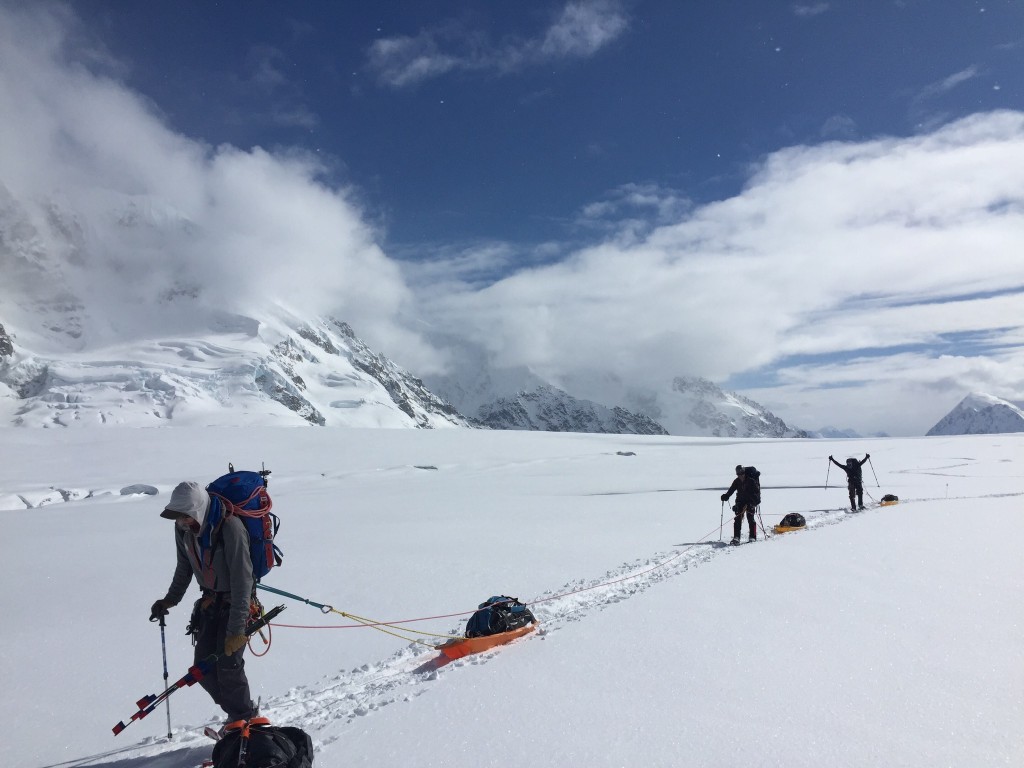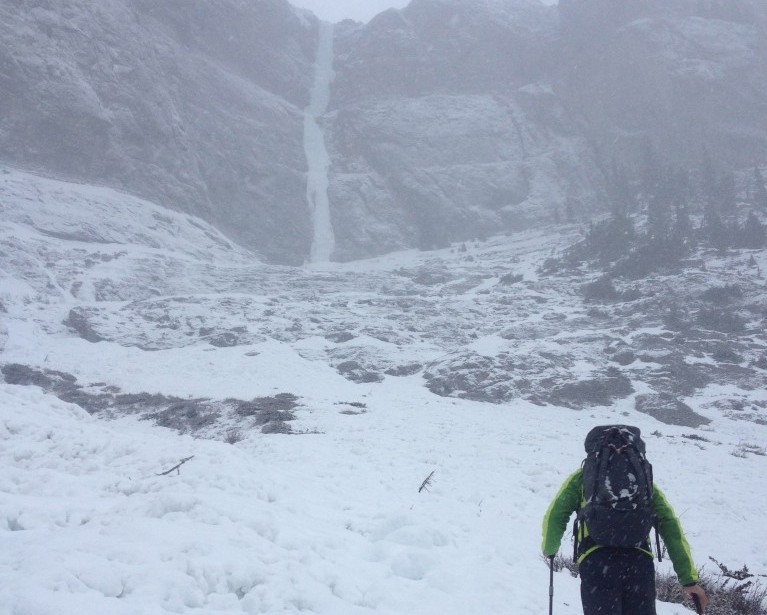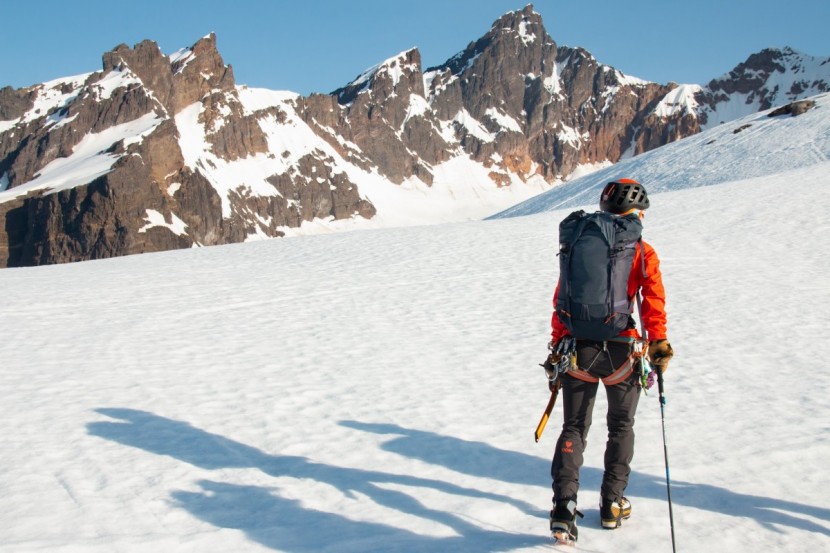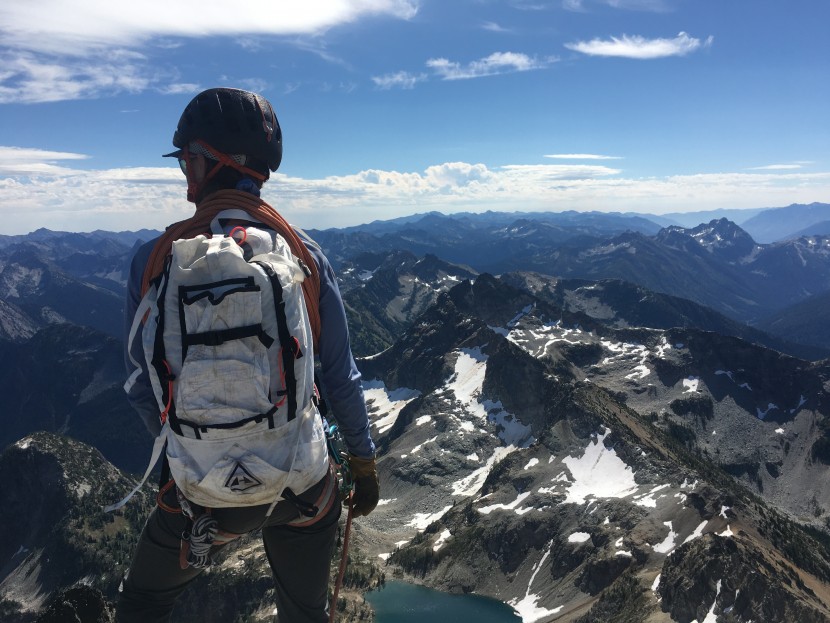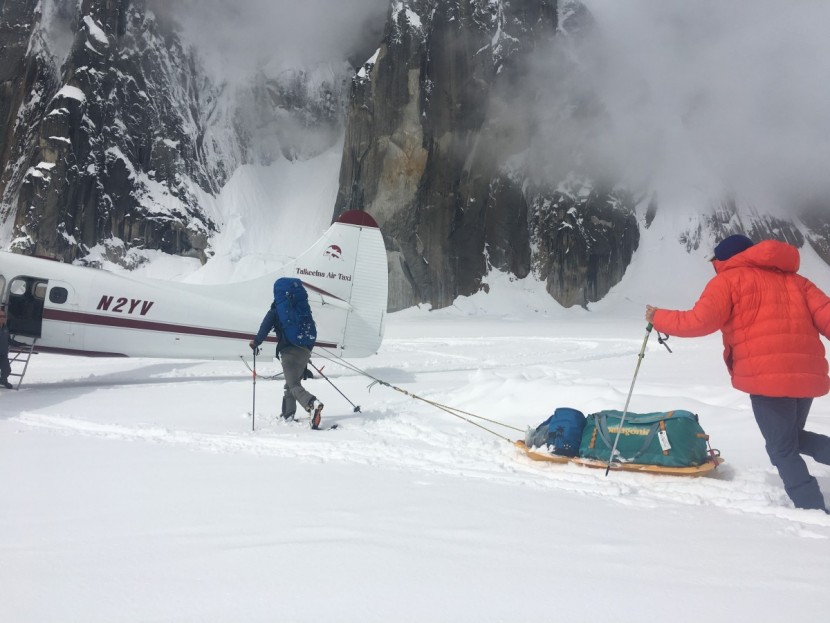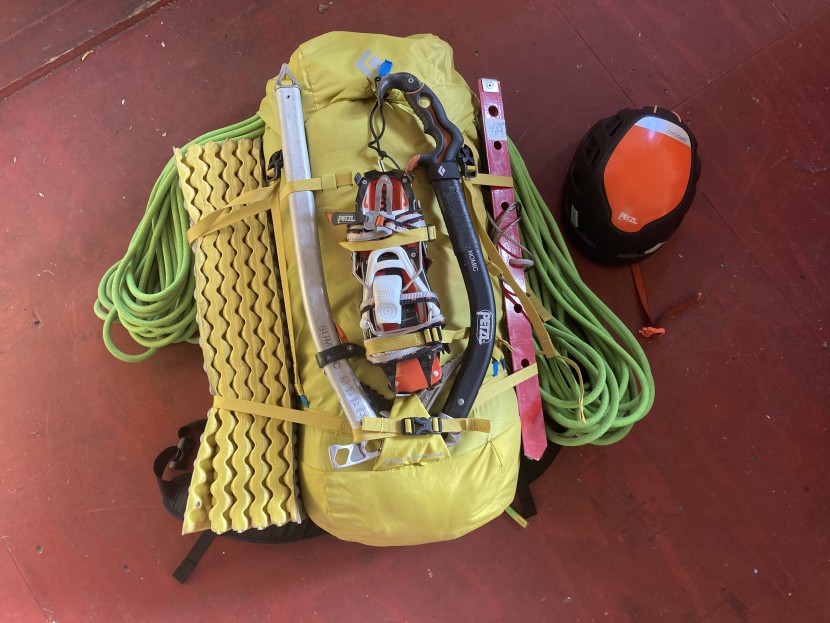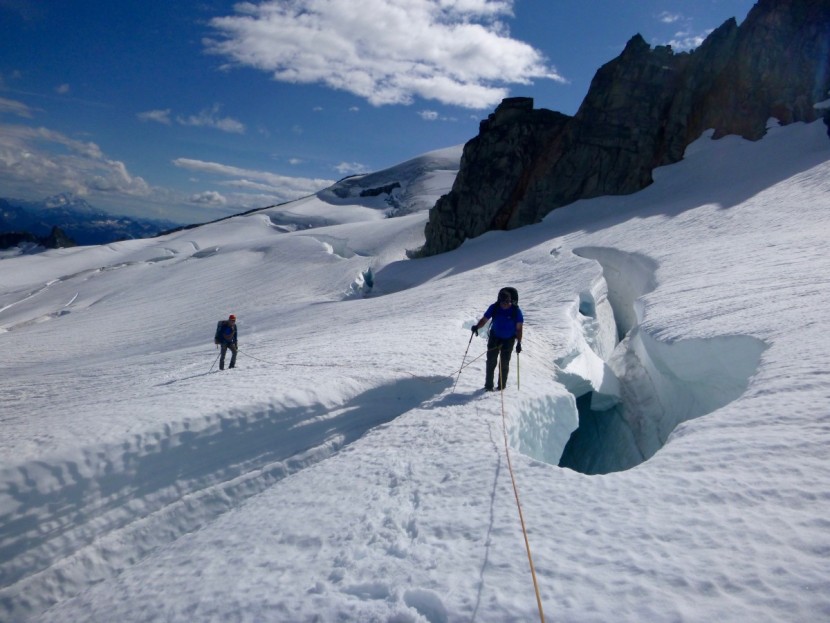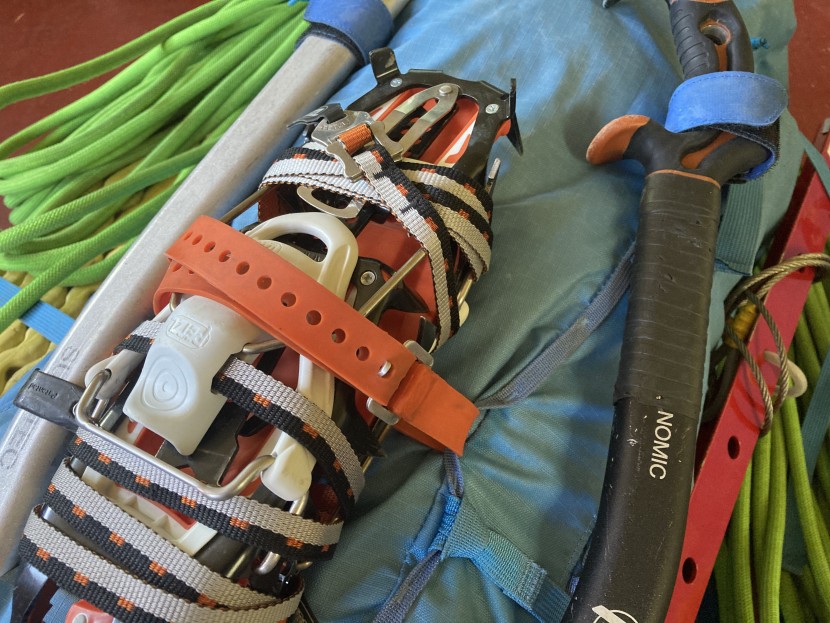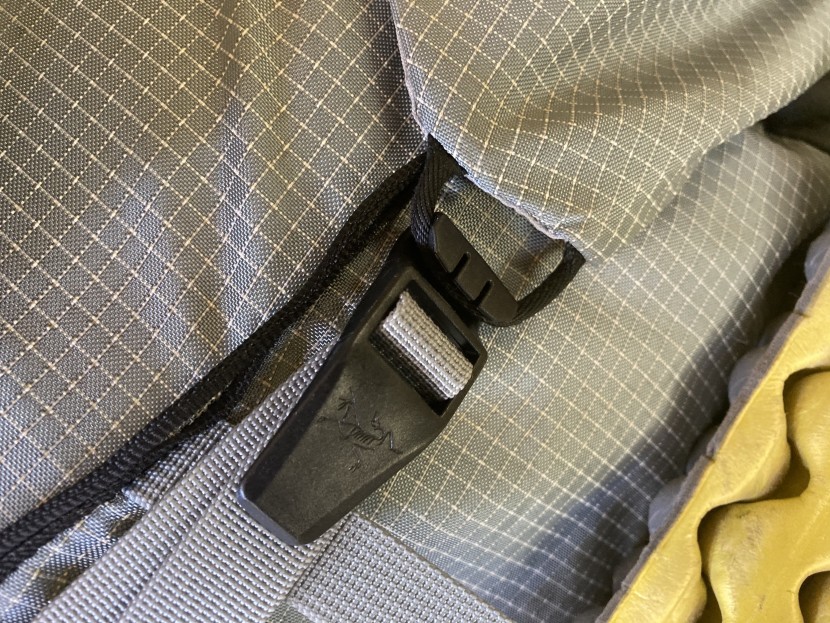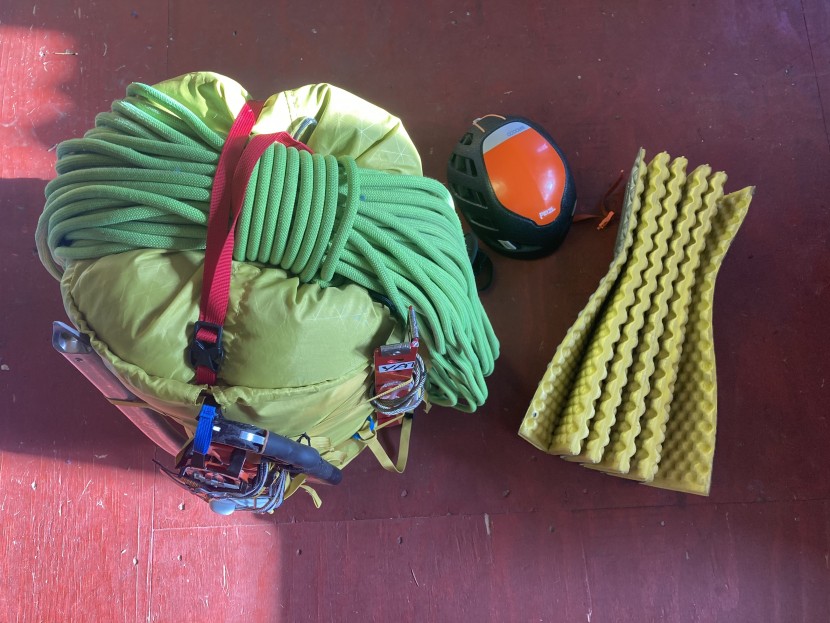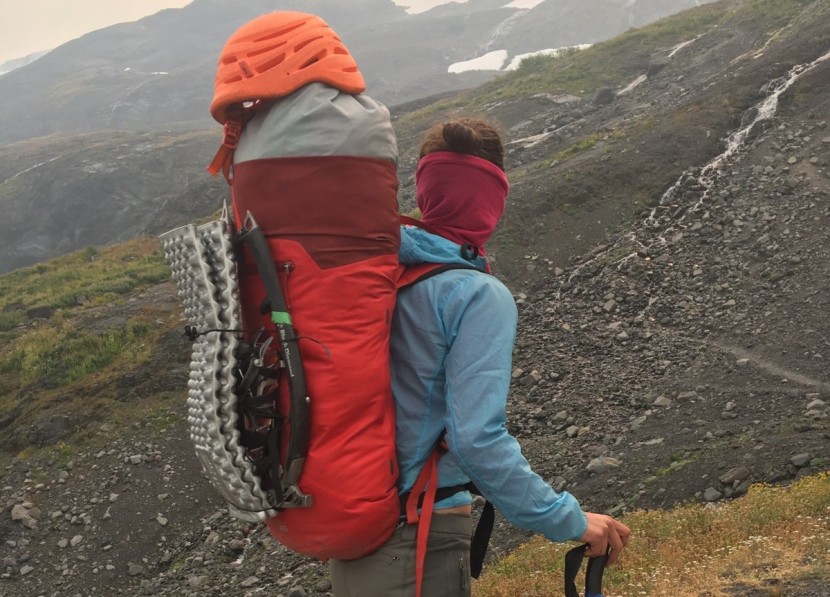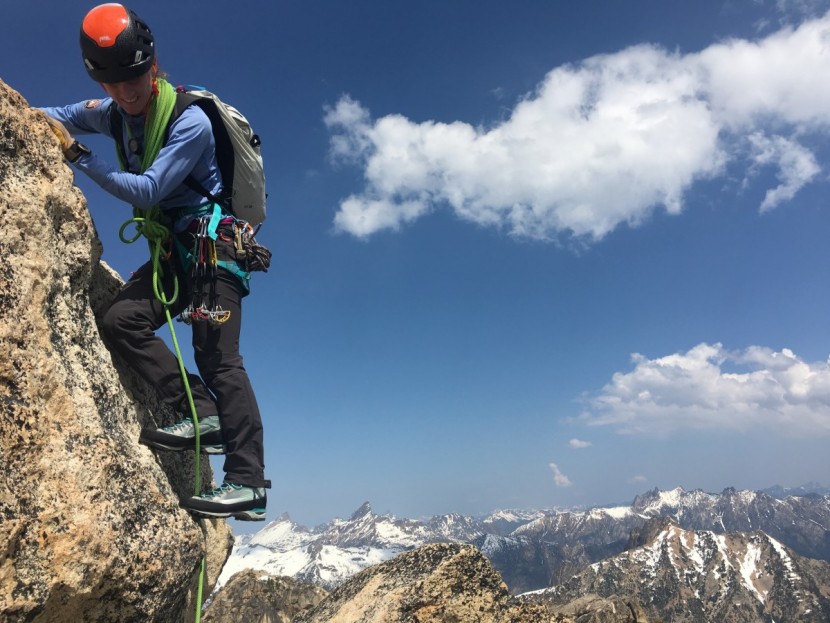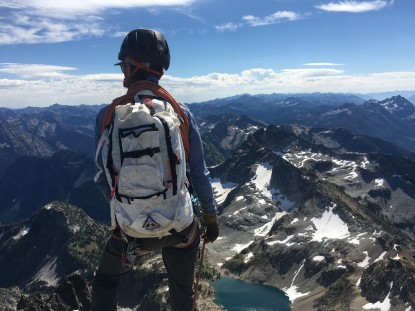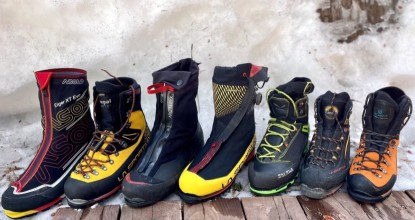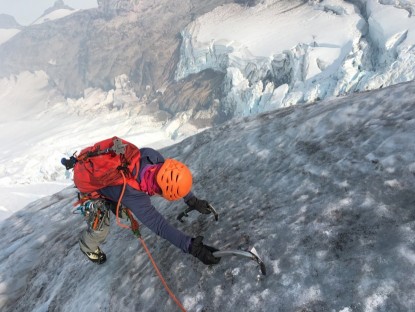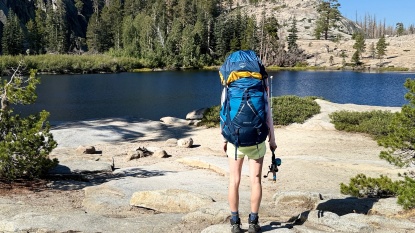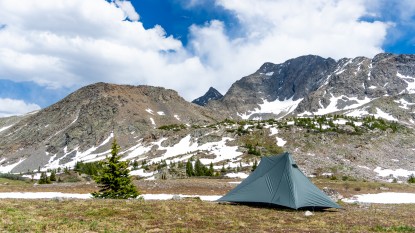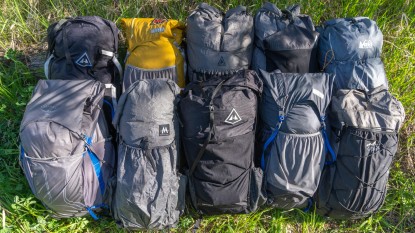An ice axe may be the universal symbol of alpine climbing: a flashy tool that can last a lifetime, carry history, tell stories, and be passed down through the generations. But the unsung hero of alpine climbing, we think, is the mountaineering backpack. This is an item of compromises, something so detailed and personal that we can spend hours debating and deliberating the various pros and cons, design flaws, features, and so on — and then realize we've spent the whole evening yammering about a plastic bag that may not be with us for more than a few months.
To spare you the loss of evenings such as these, or the heartbreak of failed gear or ruined climbs, we've spent years putting the industry's best mountaineering packs through their paces in the best (and worst) conditions alpine climbing has to offer. Our testers have a solid grasp on the strengths and weaknesses of these packs and some good ideas about how to help you find the best one for your needs.
So, where do you even start to figure out what kind of pack you need for your adventures? Your mountaineering backpack needs will depend first on your style of alpine climbing and the character of the mountain range in which you travel. Those who primarily climb rock in the High Sierra of California will require a high degree of fabric durability and may care less about the quality of an ice tool attachment. Those who are primarily climbing in glaciated mountains like the Cascades will look for axe and tool attachments and a waterproof design. Those largely climbing ice may choose a lighter fabric at the expense of abrasion resistance. Furthermore, all of these things also depend on what gear and equipment you own.
- What kind of mountaineering objectives do you spend most of your time on?
- What is your goal or objective, and what gear will make the most difference in helping you achieve that?
- What are your priorities? Comfort on the approach, low profile for on-route comfort, or ease of access to your snacks?
- Do you want a quiver of packs or one that can cover it all?
- How much camping gear or other equipment do you frequently need to carry, and how small and light is the rest of your kit?
One Pack or Two
The mountain environment is changeable, providing ample challenge to your gear on any given climb. Some climbers enjoy fast-and-light alpinism, covering lots of terrain and elevation in a single day. But many people (including those who aspire to fast-and-light but are developing fitness and skill) will require multiple days to climb big mountains or technical alpine routes. One option is to use two packs, each optimized for its specific use. Carry a big, supportive pack for the gear haul into basecamp, leave it there, and use a lighter pack for the ascent, allowing you to feel fast and nimble on the more technical terrain or at the higher altitude.
This two-pack strategy has its drawbacks, however. Notably, that you have to carry two packs, which can seem ridiculous. But the other problem is that often, in alpine terrain, we need more equipment, clothing, and sometimes even overnight gear to complete a route. The difference thus narrows between the features (and size) of the big and small packs. This strategy is a great one, however, on expeditions where you'll be at a basecamp for days or weeks, and even better if you are flown into your basecamp.
Fortunately, many advancements in modern technical climbing packs make it easier to bring just one either by (1) allowing you to strip them down to shed weight by removing lids, frame sheets, hip belts, or suspension features, or (2) focusing on lightweight materials, excellent ergonomics, and the user's high-level packing skills to ensure comfort with a wide range of load types and weights.
What is a Mountaineering Backpack?
Let's first address this basic question: what makes a pack a mountaineering backpack? This is something all climbing manuals discuss, from Kathy Cosley and Mark Houston in their current text, Alpine Climbing: Techniques To Take You Higher, to Gaston Rebuffat in his 1954 classic Starlight And Storm. Rebuffat may have the best guideline: “weight is the great enemy.” Big packs wear you out and disrupt your balance, breathing, and movement economy. That's not acceptable in an environment where your first line of defense against the mountain's hazards is efficient movement.
Mountaineering backpack designers must strike a compromise between comfort on the approach (hiking on and off-trail) and comfort and performance in technical terrain. These design strategies may seem at odds with one another, but as you start to assemble lighter-weight gear, you'll find that you can go lighter with your pack, and this ultimately improves a pack's performance on route. Additionally, as you spend more and more time in the mountains, you will develop postural muscles to carry a backpack better. You will likely find, in the long term, that you will start to prefer a simpler frame and less support in your backpack. This allows the pack to ride closer to your center of gravity, which is highly desirable on steep, technical terrain. And as you learn to work with your gear and pack your backpack to be well balanced, this will continue to improve your backpack experience.
Simple, lightweight gear demands that we use it intelligently. If you don't pack a mountaineering backpack carefully, you'll never get all of your stuff in there, and you'll end up carrying around empty space. For a good lesson in how a top alpinist loads his backpack, check out Steve House's video “Packing for an Overnight Alpine Climb”. Note that the rope, helmet, and crampons (without a separate case!) go inside the pack, eliminating the need for extra straps to attach them to the outside.
Comfort & Climbing Performance
Seasoned alpinists have been calling for trimmed-down backpacks, field-modifiable frames, and the lightest weight possible for years. Pack manufacturers have started to grasp the needs of a growing climbing community, and designs are starting to reflect our interest in improved climbing performance.This has spurred an interesting evolution in backpacks, from the beefy suspension of old school backpacking packs to the featherweight foam back panels that trademark the modern technical climbing pack.
We discuss the benefits of minimized frames frequently throughout this review in hopes that we will dispel the myth that you absolutely need beefy suspension, but also to explain how to shift to these slimmer, lighter packs safely and still have a good experience.
The first foray into modern technical climbing backpacks involved removable suspension and a removable lid — and in many climbing packs, it still does. If you want a little more support on the approach to basecamp, look for a pack with removable hip belt padding and a framesheet or metal stays in the back panel that can be easily removed (and replaced) at camp to slim the pack down for the summit bid.
As climbers, we have intuitively known these designs gave us an edge on technical climbs, but we didn't have the vocabulary to describe it. To better understand, we consulted with a Physical Therapist and climber, Andra DeVoght, DPT, from Washington, an epicenter of alpine climbing in the US.
DeVoght tried on every pack and gave us her opinion. Interestingly, her opinion perfectly matched what our testers found in field tests — flat back panels allow for excellent freedom of movement on the climb. We also didn't find much discomfort on the approach with this design. Our climbers chalked this up to two main things: no lid and a narrower diameter pack, keeping weight closer and lower, eliminating the need for load lifter straps. And the flat back panel rested flush on our backs, which helped distribute the weight further and gave us excellent control of the pack on the technical climbing.
Andra echoed these points and added some mind-blowing concepts — spinal extension and flexion. Aggressive lumbar support, found in most backpacks, tilts your pelvis forward and sticks your butt out. This is spinal extension — back arched forward, chest thrust forward. This is a very strong structural position for those not used to a heavy pack.
But climbers are used to backpacks. And they need to be able to move much more than a backpacker on a trail. With your butt sticking out, it's harder to high step. And with your chest and spine thrust forward, you can't rotate as easily to reach that handhold or swing that ice tool. With a flexible, flat back panel, you can reverse your spine into flexion, gently curling your torso as if doing abdominal crunches — a much better position from which to high step or rotate your torso.
As if that increased mobility is not enough, spinal flexion also allows you to fully exhale. For any expedition and high altitude climbers out there who are familiar with pressure breathing, this is a similar concept. When you exhale fully, as in pressure breathing, you can literally change your blood pH — and it feels really good. The key to proper breathing is making way for fresh air. And the first step of that process is to get the old air out.
Putting all of that together, these lightweight packs feel better for a reason. They let us move with more fluidity with less resistance, and they let us inhale and exhale more thoroughly and efficiently. Exceptional gear really can improve endurance.
Capacity
The alpine packs we tested in this review range in size considerably. If you're in the market for a small climbing pack to take on multi-pitch rock routes (and have no need for an axe or crampons), then you will be best off with a pack of 15-25 liters in capacity. Take a look at our climbing pack review for this genre.
Our testers are passionate and experienced climbers and mountaineers, and they all own a quiver of packs. However, we have found that 30-50 liter packs are the most versatile sizes. If you take lots of day-long, weekend, or three-day trips, this is a good size range for you.
A 40-50 liter pack may be the best size if you frequently climb in the winter and ice climb. All the extra clothing you'll take in winter tends to fit more easily in a pack of this size than a smaller contender. If you want to purchase only one alpine climbing pack and take multi-day trips occasionally, a 40-50 liter model is the best choice. With 50 liters, you can much more easily accommodate the items you need to live in the mountains — stove, fuel, shelter, and extra food. Our testers can make this size work for trips up to 5-day in the summer, with excellent packing and a focus on the necessities.
If you're considering purchasing two (or more) packs with the same listed volume but different manufacturers, be aware that not all companies measure volume the same way. Find out what the actual volume is of the packs you're interested in. We decided to do this for all the packs that we reviewed. We use a method similar to but not exactly the same as the ASTM standard some of the pack manufacturers use. Find out more about our testing methods by reading How We Tested Mountaineering Backpacks
Fabric and Durability
Once you've decided what capacity pack is best for your needs, consider what your durability needs are. The common trade-off between weight and durability is at play here — lighter-weight fabrics are generally less durable than heavier fabrics. A crucial factor that determines your durability needs is the type of alpinism you intend to do. Routes with technical rock climbing are harsh on a pack's outer fabric. Climbing tight corners, rubbing the pack against the wall as it hangs from an anchor, even a short-haul up a cruxy section can produce a tremendous amount of wear and tear in terms of fabric abrasion.
Ice and snow climbing and glacier travel tend to be a bit nicer to fabric. Sure there are crampon points to watch out for and the occasional mixed chimney to grovel up, but you're often tossing your pack around into snow, not rocks. Ultimately there is a value judgment you have to make — how much durability am I willing to sacrifice to save weight? If you climb very regularly, you will appreciate more durability. Lightweight fabrics will make bigger weight savings on larger packs than on smaller packs. For this reason, it's usually a good idea to look for durable fabrics for your smaller pack, particularly if you'll be taking it rock climbing frequently.
Durability: What to Look For
Durability is a combination of fabric selection and the durability of the pack's components (axe attachment, buckles, etc.) Technical fabrics can be confusing, but here are some basics:
The denier (d) of a fabric is a rough measurement of the fineness of the fibers used to create it. In other words, a higher denier fabric means more durability than a lower denier fabric, though it also means more weight. Think of the vast difference in weight, durability, and feel between the nylon on an expedition duffle bag (perhaps 1000d) and the nylon on an ultralight tent (perhaps 10d).
Different materials have different properties. Most packs are made from nylon fabrics — a common example is nylon with Dyneema ripstop — which offers better tear resistance than nylon by itself. To find the best balance of weight and durability, look for packs that use a combination of fabrics. Robust fabrics on the bottom and side panels, and lightweight fabrics on the upper sides, front, and lid — where wear and tear is much less.
If the backpack is waterproof or resistant, consider how long that will last. Nylon fabrics are not waterproof by themselves, so nylon fabrics usually have a polyurethane (PU) coating on the inside. This coating can degrade and wear off over time, making a pack less weather resistant.
Non-woven Dyneema (NWD) or Cuben fiber is lightweight for its strength and is 100% waterproof. It's constructed of Dyneema threads laminated between tough and UV light-resistant Mylar. One of Dyneema's properties is that it can't hold dye, so it's always white, but not all white packs (or parts of packs) are made of Dyneema/Cuben Fiber. This non-woven Dyneema technology is from the sailing industry but is increasingly appearing in mountaineering and climbing gear. The major drawback of NWD is that although it is strong in terms of tear resistance, it does not stand up to abrasion. This is a huge downside for use as a pack fabric. Companies that use NWD in packs are generally approaching this problem by constructing packs from hybrid fabrics. Hyperlite Mountain Gear, for example, uses Dyneema Composite Hybrid fabrics, which include a face fabric laminated with a Dyneema Composite Fabric. This strategy addresses the need for improved abrasion resistance in these fabrics.
Durability of Features
Feature durability is important since broken features (like a broken axe attachment) can render your pack useless for some trips — and potentially send your tool hurtling down the mountain. For this reason, we look for features that are both robust and simple. The most durable axe/tool attachment is likely simple sewn loops on the bottom of a pack. These are tried and true but a bit less secure for the heads of modern ice tools, which often don't have an adze or hammer.
During our testing, we broke a handful of features (buckles, pull tabs on shock cord, etc.). But, in every instance, we were able to fix the issue by replacing the shock cord or buying a new buckle. The moral here is that the most durable features are generally the simplest. One feature that is very difficult, if not impossible, to fix is a wrecked zipper. Mountaineering packs shouldn't have zippers as their primary openings and should avoid long zippers on the pack body.
Features
Certain important features like fabrics and main closures are discussed above. Beyond the fabric type, you want to choose a pack based on its features. Simplicity is the most desirable feature and leads to packs that are more durable and lighter. This is what distinguishes an alpine pack from other packs.
There are a variety of ice tool attachments out there. We like packs that slide the picks into secure, snag-resisting sleeves (the fabric here must be durable), where the head is secured either with a buckle or T-bar, and the shafts are attached to the pack with a loop of shock cord, a velcro loop, or are slipped into the compression strap. We much prefer each tool to be secured separately, instead of one buckle or strap securing two tools, so that we can remove one tool with our favorite alpine cowboy move: reaching to the back of the pack, flipping the T bar, and quick-drawing the axe — all without having to take off our backpack!
You're often carrying a rope when alpine climbing. Our testers prefer to get the rope inside the pack when they can. When they can't, the best thing to do is to tie off lap coils so you can drape it nicely over the top of the pack. To learn the technique, watch the way this guy finishes his butterfly coil.
Finally, if you are attempting routes on which you might have to haul your pack for a pitch or two, make sure to look for robust haul points sewn onto the pack.
Adaptability
We tend to look for packs that had the option to “strip” weight by removing the lid, hip belt, and frame. Removing these items can make a pack lighter for climbing. A padded hip belt may be great for hiking in but restricts harness access and comfort while on route. Having the option of removing it, or even leaving it at home altogether, may be ideal. And having a removable pad for the frame sheet (or your back panel) could mean you don't need to bring a sleeping pad.
More and more, we're finding creative ways to make our climbing experience a lightweight adventure. And remember, it's not always about buying the newest, best, or lightest gear — sometimes it's figuring out what you can leave behind.
Fit
Purchasing a pack that fits well is critical to comfort. The less padding in a pack's suspension and hip belt, the more important fit is. Do your homework and try the packs on in a shop or order them from an online retailer with a great return policy. Most pack models come in at least two sizes. Measure the length of your torso — bottom of the neck at that bony protrusion, to top of the hips along your spine. You'll be glad you did.


